Biography
Interests
Shimon Shatzmiller* & Galina Zats
Department of Chemical Sciences, Ariel University, Ariel 40700, Israel
*Correspondence to: Dr. Shimon Shatzmiller, Department of Chemical Sciences, Ariel University, Ariel 40700, Israel.
Copyright © 2021 Dr. Shimon Shatzmiller, et al. This is an open access article distributed under the Creative Commons Attribution License, which permits unrestricted use, distribution, and reproduction in any medium, provided the original work is properly cited.
Just before further significant easing, the infection coefficient is still around 1, and the fear of variants does not go away. However, Israel is in a unique situation, the first of its kind in the world - A "routine" may succeed this time!
"We are getting herd immunity, but we are not there yet," added the director-general of the Ministry of Health. "The serious illness, probably among the adults, is on the decline." More - maybe in time after we get herd immunity, we might be able to go without the masks.
Dear Editor,
A year after the deadly plague outbreak, many countries worldwide already recognize the decline process's beginning. Across the world, there has recently been a dramatic drop in the number of people infected worldwide, and there is hope that the peak is already behind us. But even when we can declare [1] victory over the virus, it seems that its presence and effects will accompany us in the years to come. Even at the end of a challenging year that claimed victims and difficult prices, it is clear that Corona left results in the field - that will not soon disappear.
Today: Modern vaccines but also Palliative care for patients with severe COVID-19 practiced in clinics [2].

One could read in "Nature" from 2003 [4] that microorganisms such as the HIV (AIDS) and others, for example those that cause the cruel flu. Many are often described as "wicked". This is because they change rapidly, a trait that helps them evade medications or the human immune system. However, so far, the SARS virus has seemed remarkably unchanged: the genome sequences isolates from patients in Singapore, Toronto, China and Hong Kong have not shown real results. This is not because the SARS virus does not change, but because the mutations thrown so far Did not prove to be particularly useful. Because the virus has so far met with little resistance from its new human hosts, there has been little selective pressure to cause the conservation of new mutations [5].
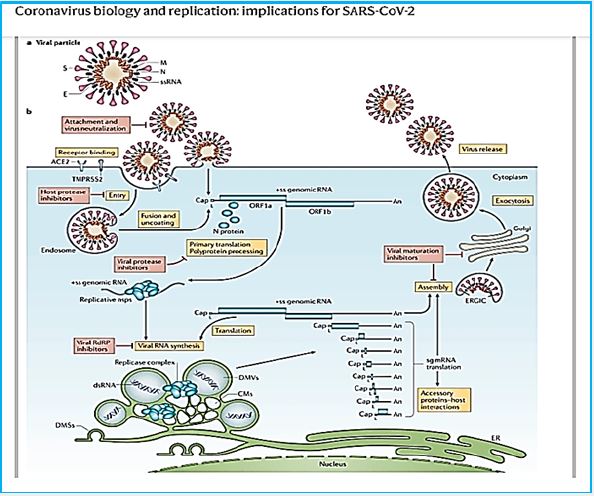
Scientists have said that the more the human body is adapted to the virus, the more prone the virus is to fight
by trying to evade the body's immune system.
A new strain of Coronavirus crosses the south of England, encouraging restrictions in the country and a ban on flights from Europe as well as around the world. The United Kingdom has said the new rapid release of the virus could be transmitted in 70% of existing strains, and appears to be driving the rapid spread of new infections in London and the south of England. Britain and its environs have had a strict lock-out that cancels out Christmas.
The panic spread when British Prime Minister Boris Johnson's statement came on Saturday that the new COVID-19 strain spread faster than the previous ones. As a result, some countries are banning flights to and from India. India joined the list on Monday, as flights between and from the UK are forbidden from 22 to December 31. However, government officials said that no strain of the new corona virus had been detected in India on Monday.
The contagious COVID-19 has undergone several mutations over the years, but the emergence of the new strain of the coronary virus has not caused an alarm not only in the UK but around the world. When all countries are awaiting vaccination, the discovery of the new version has raised several questions: Can the vaccine stop the new strain of the coronary virus? Is a new strain more dangerous?
However, scientists say that all viruses are variable, and this is in nature. Even the flu virus varies so vaccinations need to be updated frequently. The Coronavirus has been silenced once at the onset of the epidemic, and the virus is continuously updating itself.
To date, scientists have noted that two major mutations in the virus caused COVID-19, the deletion of H69 / V70 and D164G, both of which affect spike proteins, helping the virus to bind to and infect the human cell. The vaccine seeks to target and weaken this ability. After the virus was first discovered in Wuhan, he was silenced many times most of which did not go unnoticed [7].
The BBC reported that if the strain that infects humans now compared to the first one spread in Wuhan a total of 25 mutations will be seen, it is a little more than two mutations every month. Scientists have said that the more the human body is adapted to the virus, the more prone the virus is to fight by evading the body's immune system.
Vaccines based on live virus provide significant protection against many pests and harmful diseases of
humans and animals, but reversal of mutations by mutation and recombination has reduced attraction.
Using the Acute Heavy Virus Crown Model as a model, we designed a different transcriptional regulatory
circuit and isolated recombinant viruses. The transcription network allowed efficient expression of the viral transcripts and proteins, and the recombinant viruses were replicated to WT levels. Recombinant genomes
were then constructed that contained mixtures of WT circuits and regulatory circuits, reflecting recombinant
viruses that may occur in nature. Although viable virus could be easily isolated from WT and a recombinant
genome containing homogeneous transcription circuits, chimeras managing mixed regulatory networks
were always lethal because viable chimeric viruses were not isolated. Mechanically, mixed regulatory circuits
have promoted inefficient subgenomic transcription from inadequate start sites, resulting in truncated ORF
occurrences and effectively minimizing viral structural protein expression. The transcriptional regulatory
circuits of alleles communicating together successfully place genetic traps in a viral genome that are lethal to
governors of the recombinant progeny of RNA.
The Binding of the Virus
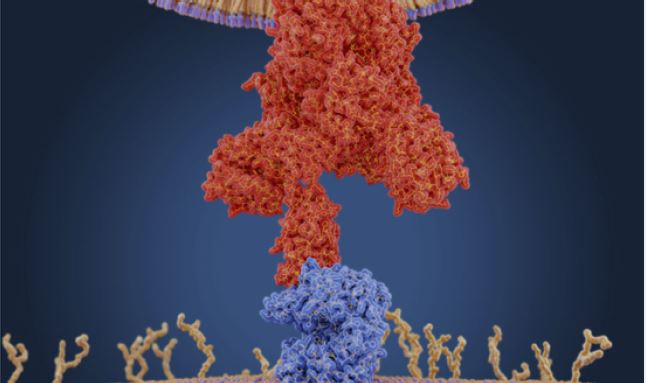
The U.S. Food and Drug Administration (FDA) recently approved approval for emergency use of the COVID-19 vaccine developed by Pfizer and German pharmaceutical company BioNTech.
The vaccine has made history not only because it reported a 95 percent efficacy rate in preventing COVID-19 in clinical trials but because it is the first vaccine the FDA has ever approved for human use based on RNA technology.
"The development of RNA vaccines is a great blessing for the future of infectious disease treatment," said Lynn McQuatt, a senior professor of Jay Lowell Orbison's honorary service in biochemistry and biophysics, oncology and pediatrics in Rochester and director of the Rochester Center for Biology.
COVID-19, short for "Coronavirus 2019", was caused by the new coronavirus SARS-CoV-2. Like many other viruses, SARS-CoV-2 is an RNA virus. This says, unlike humans and other mammals, the genetic material of SARS-CoV-2 is encoded by ribonucleic acid (RNA). Viral RNA is insidious: its properties cause the mechanism of protein synthesis in humans to err because of the RNA produced by our DNA.
For this reason, some of the leading COVID-19 vaccines and therapies are based on RNA technology.
Research scientists at the laboratories examine the RNA of viruses to understand better how RNAs work and how they are involved in the disease. This RNA study provides an essential basis for developing vaccines and drugs and other drugs to disrupt the virus and stop infections.
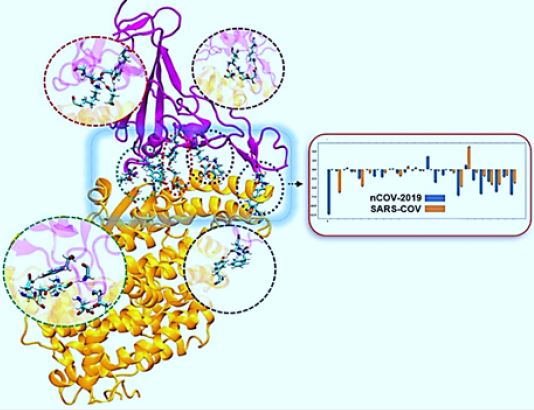
The COVID-19 eruption has brought the world to an end. No country has touched it when medical staff and policymakers make sure to stop the spread of the infection. More than 1.5 million people worldwide have died so far, and the social and economic impacts? It's too early to tell how bad they will be. The so-called Spanish flu, which extinguished the British tradition of a kiss on the cheek, was also called a "destroyer and teacher". From the same epidemic we learned that social distance and good hygiene greatly reduce the spread of infection, and yet, the number of people infected with COVID-19 is starting to rise again. Desperate vaccinations are needed.
A research team at the University of Maryland (UMD) Department of Chemical and Biomolecular Engineering (ChBE) examined why this coronary virus has such a high transfer rate. The team, led by ChBE professor Jeffrey Cloud, discovered exactly how COVID-19 binds to the enzyme angiotensin converter, or ACE2. In addition, they determined how COVID-19 differs from its cousin, the Coronavirus of acute respiratory syndrome (SARS-COV), which caused the outbreak in 2002 and why COVID-19 is more deadly.
Researchers identified places in the receptor-binding domain of Coronavirus where the virus is more vulnerable, and mutation would significantly lower binding affinity. These Coronavirus locations could be harnessed as a target for drug design purposes and hopefully stop the pandemic.
Coronavirus disease 2019 (COVID-19) is caused by severe acute respiratory syndrome coronavirus 2 (SARS-CoV-2). Lessons learned from severe acute respiratory syndrome coronavirus (SARS-CoV) have facilitated a better understanding of the COVID-19 pandemic and efforts to develop targeted therapies. In particular, COVID-19 reminds us of the importance of the renin-angiotensin-aldosterone system (RAAS) in cardiovascular, pulmonary, and kidney physiology. After decades of RAAS research, we can apply this knowledge to understand COVID-19 pathophysiology better and to inform rigorous studies [11,12].
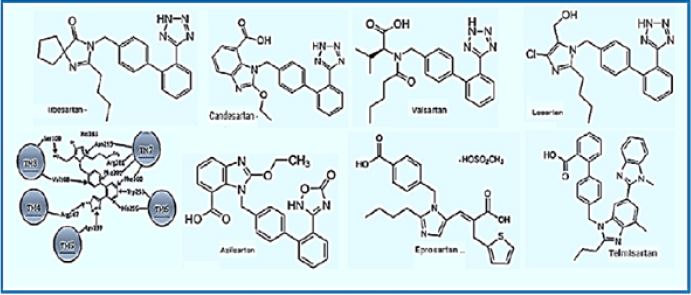
Losartan Group Pharmaceuticals
The blocking of ACE2 receptor by losartan (credit ref. [8])
Does Losartan block the receptor used by the corona virus? Losartan is not a receptor, but it blocks a chemical (angiotensin II), which binds to a receptor, type 1 angiotensin 2 (AT1), which lowers blood pressure. Losartan does not block the virus that causes COVID-19, known as SARS-CoV-2, but it may reduce the activity of the renin-angiotensin system, which is overactive in people with high blood pressure, which may increase the risk of developing lung complications. From COVID-19. Med Clin Res., 2020 https://medclinres.org/ Vol. 5 | Issue 8 | 50 Several animal studies have found that losartan is beneficial in reducing severe lung imaging damage in mice infected with other viruses, such as SARS. Few studies have been conducted with humans. For now, any beneficial effect of Lucretan is just a hypothesis (suggestion). It may not be a good idea to start some kind of medical treatment based on an untested hypothesis as unexpected injuries may outweigh all the benefits. For people who are already taking Losartan or any other ARB, advice from the medical community is to continue taking it unless your doctor tells you otherwise. Kozar belongs to a group of angiotensin receptor blockers, also known as angiotensin II receptor antagonists. Losartan works by blocking the receptor and thus the action of a natural chemical called angiotensin II. ARBs prevent angiotensin II from binding to type 1 angiotensin (AT1) receptors located in the heart, blood vessels, kidneys, cortex, lungs, and brain. Losartan, then, works on the renin-angiotensin (RAS) system, which is a hormonal system that regulates blood pressure.
The ability of COVID-19 to adhere to ACE2 [13] receptors is an essential determinant of viral infection with Coronavirus, making it a major target for vaccines and antiviral strategies. SARS had the same spike protein with a similarity of about 80% to COVID-19, however COVID-19 is more lethal. This is due to the binding of the receptor. Researchers found that in COVID-19 is stronger than that of SARS, which leads to a higher transfer rate into the cytoplasm.
"Using a simulation of molecular dynamics and free energy calculations, we investigated in atomic detail the difference between receptor binding affinity in both COVID-19 and SARS, and found mutations that strengthen receptor binding to the virus," Clauda said.
The team examined databases for mutations in the binding domain of the coronary virus. The scientists found several frequently reported mutations all over the world. They discussed the effect of these mutations on the binding relationship between the hormone virus and the ACE2 protein. Most of these mutations had the same affinity for ACE2 compared to SARS, but some increased the binding affinity of COVID-19 for ACE2. These mutations can lead to a more potent and more contagious coronary virus.
"We also performed molecular simulations on the seven most common mutations found from receptor binding (RBD) mutations: N439K, T478I, V483A, G476S, S494P, V483F and A475V," Gurbani said. "From an evolutionary point of view this study shows the remnants in which the virus may develop further and become even more dangerous to human health." Furthermore, Clauda said, "To the best of our knowledge, this is a detailed molecular simulation study on the effect of different mutations on COVID-19 binding to ACE2."
The study also addresses the interface of the Coronavirus and ACE2.
In response, many laboratories have drawn attention to SARS-CoV-2, meaning that tools that can be
used in laboratories that are not accustomed to working with coronaviruses are urgently needed. Here is
a report on a variety of SARS-CoV-2 research tools. First, we describe a single-reverse reverse plasmid
genetic system SARS-CoV-2 for genetic maneuvering and can be used to rescue an infectious virus through
transient transfection (without in vitro transcription or plasmids for further expression). Furthermore, we
show that the promising antiviral activity of Epilimode depends on the expression PRSS2TM. Overall, our
SARS-CoV-2 toolkit, which can be accessed directly through our website at https://mrcppu-covid.bio/, is
a resource with considerable potential for advancing COVID-19 vaccine design, drug testing and detection
science [14].
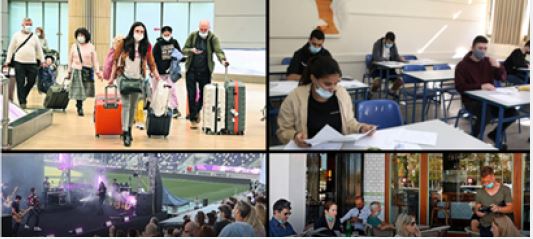
Big relief phase: the "holes" in the outline - and the fear of another eruption.
Today, the State of Israel's economy will be most widely open since Corona restrictions were imposed. As in previous rounds of relief, this time too, there seem to be quite a few difficulties in the government-approved directives From Ben Gurion Airport without significant enforcement, to only partial opening of 7th grades '-I'.
According to the outline, only those with a green label (vaccinated a week after receiving the second vaccine and recovering) will sit inside the restaurant. The question is, will any restaurant prevent those who do not have a green label from sitting inside the restaurant? And if businesses break the rules, will there be adequate enforcement?
The Ministry of Health fears another outbreak, also due to how Ben Gurion Airport was opened. Yesterday, the head of the public health services, Dr. Elrai Price, referred to this in an interview with "Friday at Five" and said that "it is very worrying." She added: "This is an unresolved point. I understand the need to bring everyone back from abroad, it is really a national need. Along with that we must do it safely. We know that the insulation in the house does not work well" [15].
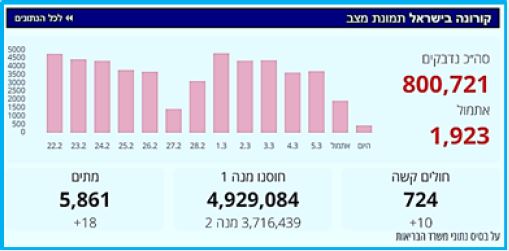
Corona data (7 March 2021):
On the morning of the entry into force of the third beating, the Ministry of Health updated that 1,923
Israelis received a positive response to Corona yesterday. The positive rate out of about 46,000 surveyed
yesterday stands at 4.3%. In Bnei Brak, the verified rate increased by 26%. The outbreak of the plague
infected more than 800,000 people, and 5,861 died [15].
Bibliography

Hi!
We're here to answer your questions!
Send us a message via Whatsapp, and we'll reply the moment we're available!